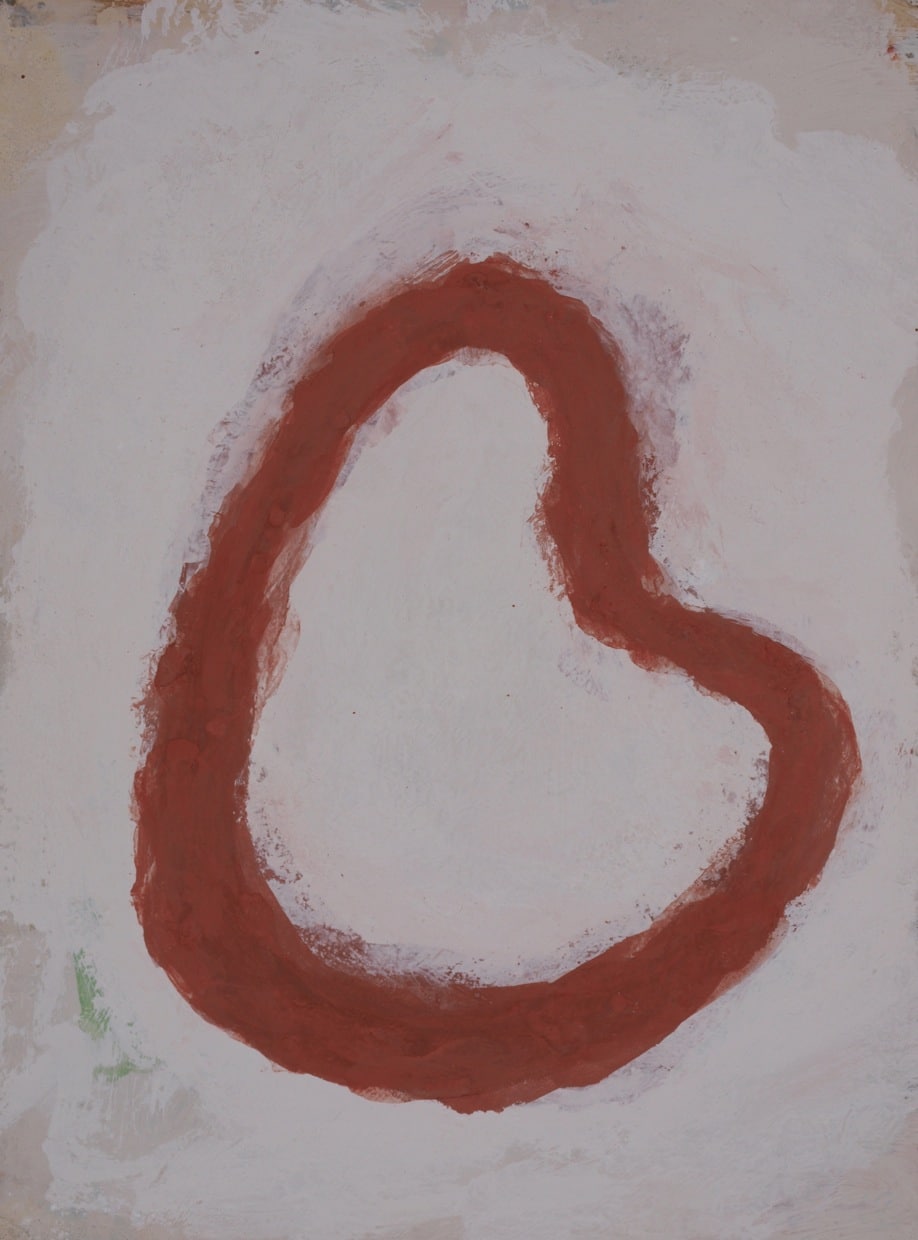
- This event has passed.
Exhibition: Works on Paper by Lex Braes

The CRS Gallery announces a solo exhibition by Lex Braes of works created on paper, primarily with home-made water-based paints. The exhibition will be on view from January 27 – March 2012.
What does a painter do? He paints. Every day, in the case of Lex Braes. In this small show, concurrent with his aptly titled exhibition, “Routine,” at www.showroom http://www.showroom170.com on the LES through Feb 26 , a sampling of small works on paper from the past six years provides a window into Braes’ routine of approaching a handful of images again and again, in some cases year after year: a head resting sidways on an arm, a simple architectural structure, a face, an abstract pattern; some days he varies the pigment, other days the texture, the breadth of the stroke, the lay of the lips. While there are no self-portraits here, and no unifying themes or motifs, the paintings convey the commitment of the artist to the daily practice of painting, to painting as practice, the practice of opening oneself to see the subject, unimpaired and unencumbered, in the moment, and to respond in that moment in a way that honors the truth of his subject and himself.
He paints what he sees, but not in a vacuum. A well educated and cosmopolitan man, “Intellectual rigor is essential to his work; he is inspired by everyday life, to be sure, but also by writing, by the Frankfurt School, and by the Deconstructionist movement in Paris—Derrida, Deleuze, Guattari, and the like. With each painting, Braes takes his initial subject matter—that image or thought that first grabbed his attention— and ardently deconstructs the myths that surround the image, as well as the myths that envelop the act of painting itself. Thus he makes intellectual decisions about the work while allowing for a deeply personal improvisation to actually reinvent the canvas. And the magic of his work is that despite the deconstruction, despite the slow accretion of image over idea, in the finished product the story is still wholly up for grabs” (janera.com). “If you limit the idea to a product, rather than a gem, you lose the point,” he explains. “I try and allow the attraction of the image to generate an open possibility of an idea, not a closed one.”
While this may sound very zen, his painting communicates a surprising degree of passion. The repeated takes on the same subject, day after day, betray an ardent curiosity, a yearning to comprehend the essence, or range of meanings, of his subject and its characteristics. There is a vitality in his stroke, an unvarnished strength in his pigments, a resolution and energy. Braes tries to avoid participating in the commercial art world, but (or perhaps, in part, because of this), as his dealer in Germany will attest, they sell. His paintings speak immediately to the viewer on some primitive level and are deeply pleasurable to behold, without (or despite) being entirely understandable. We cannot identify all the thoughts and ideas that have contributed to the shaping of each of his works, nor do we need to, but we can sense that within his arrangements of paint resides the living thought of an engaged, creative mind. Braes’ paintings vibrate. They demand to be contemplated, repeatedly, over time.
If you are interested in purchasing Lex’s paintings, contact him at lexbraes@ymail.com.
Lex Braes was born in Glasgow, Scotland. He studied at the Duncan of Jordanstone College of Art, Dundee, Scotland (1974-1979), at the Brooklyn Museum Art School (1979-1980), and at the University of California at San Diego under Allan Kaprow in the MFA program (1983-1984). Recent notable exhibitions include “Holding Patterns,” Felix Ringel Galerie, Düsseldorf (2010); “Gallery Artists,” Flowers Gallery, NY (2009) and “Punctuated Equilibrium,” Michael Langen, Feldafing, Germany (2003).
In 2012 his work is included in “The Annual: 2012” at The National Academy Museum, New York and in “Routine: Lex Braes with video work by Allan Kaprow and of Shoji Hamada” at Showroom (showroom170.com) in New York.
Braes has been a Visiting Assistant Professor in the Undergraduate Architecture Department at Pratt Institute since 2004. He is represented by Felix Ringel Galerie, Duesseldorf, Germany and lives and works in Brooklyn, NY (photo by Johan Granberg).
